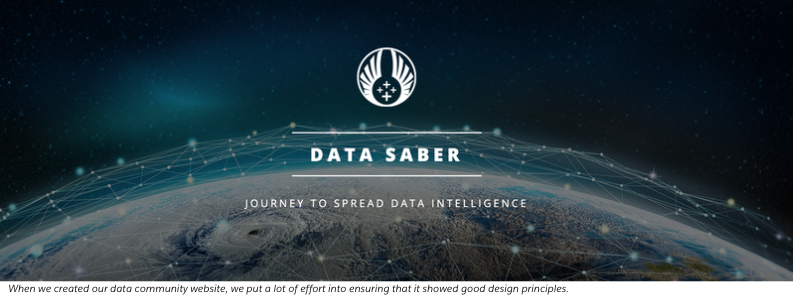
Building a Community to Accelerate Data Culture


Have you ever thought about building your own data community? It will take a lot of effort, but the results can be transformative: for your colleagues, your peers and their companies, even your career.
In my own case, I was working at Tableau in Japan in 2017 when I felt the inspiration to create something. Existing sessions for Tableau employees, customers, and users were helpful, but were mostly restricted to tips and advice on how to use the platform. There was little content on building a data culture, so the mission and vision of what we were trying to do were missing.
Starting a movement
Like most movements, our move toward building a data community started small. Some colleagues thought we should shoot high right away and recruit many members, but I felt strongly that our focus should be fewer than a dozen people, and that these people needed to show potential as future advocates or evangelists of data culture. Keeping the group small at first also would give us the opportunity to shape its culture more intentionally.
Like any good technology program, we started with a pilot phase mentality. It was a three-month trial targeting just ten people from different companies, and focused on the foundations of being data-driven in the workplace.
The 90-day structure of the program was deliberate on my part, because I realized in 2017 that it had taken me four years to learn Tableau. Although this journey was fun, it felt too long for developing a single skill. I wondered how I could compress the content needed to master Tableau into a much shorter and more efficient timeline.
The spark of success
I will admit, our community training program was intense. It included sections on data literacy, data platform, data visualization, and data storytelling. It put a lot of emphasis on the power of data narratives to share insights and generate results. It was stressful but also fun, especially if you were a data advocate.
We also had a great result with our very first class of members. One of them, who worked with Tableau, convinced her organization to use Tableau by everyone in her company. It was a genuine proof of the story we were trying to tell about data-driven culture. That’s when I really knew we were onto something with this community.

Before too long, we had 105 graduates from the program, which we called DATA Saber. That’s when I passed teaching duties off to the next generation of trainers. Now, six years after we started, we have more than 1,200 participants who have completed our program and are spreading the message of data-driven culture in their organizations.
Based on my experiences with this community, which was a first in Japan, here are some strategies you may want to follow as you build your own data and analytics communities:
- Use your natural creativity. We liked the idea of playing on the Tableau training program, which was called Jedi. Because of IP issues I decided to search out a name that had the same cool factor, and landed on DATA Saber. This name also allowed us to assign levels of training completed, such as Apprentice, Knight, Master, and Grand Master. Before you land on a name, make sure to do your legal and copyright research.
- Set aside the time. Expect to put in some nights and weekends as you’re getting your community off the ground, especially if you’re creating a website, as we did, and had to move to online training, as the pandemic forced us to do. The good news is the work shouldn’t really feel like work. And if you’re a true data advocate, the time you invest in your community will fly by.
- Think about guidelines and governance. Our first DATA Sabers group was quite small, we all knew each other, and we were meeting face-to-face. Over time, we added some guidance about the overall intent, direction, and vision of the community. What has become quite important in the past six years is communicating who should join: people who are passionate about expanding a data-driven culture in their organization.
- Don’t limit by vendor. Although my data skills are primarily in Tableau, it doesn’t make sense to use it as the only example of a data visualization platform. If people in the community can resolve a question using another tool, that should be totally fine.
- Think about equality and transparency. The last result you want from a data community is for it to feel closed or unequal. If your community begins to grow quickly, as ours did, make it clear what the qualifications are, how to apply (if that is part of your process), and who to contact to find out more.
As a final recommendation, I would say you should celebrate your wins. NTT, the largest telco company in Japan, now has DATA Sabers on staff, as do Rakuten, NEC, and Yahoo.
The mission continues
I always like to say that with DATA Saber I wanted to build a data community that could still thrive if I stepped away. I now feel confident this is the case, in the same way that I feel we’re just getting started. There is so much room for growth in data culture in Japan. That’s why it’s so satisfying to see DATA Sabers are driving the culture in their companies, writing books, publishing on Tableau Public, and presenting at conferences.
Although Japan still trails some parts of the world when it comes to data culture, I feel very hopeful that we are making significant progress. We have a strong learning culture as a nation. We like to work hard. And our culture is focused on collaborating and working together. Thanks to our community, I feel that we are making strides. In fact, I’ve heard that some companies are now listing DATA Saber among their job qualifications for some roles, even though it’s not an official certification. I feel very honored about this, and it shows how true data culture advocates can create surprising amounts of impact.




